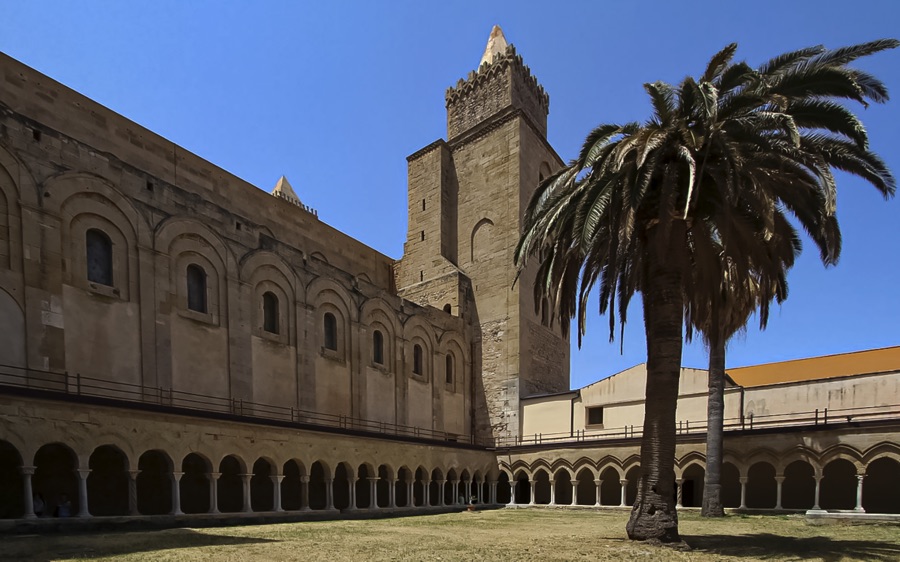The building stands out on a platform on the imposing
rocky mass
stretching out towards the sea, embraced by the jagged peaks of the Sicilian Apennines between the Nebrodi and the Madonie mountains. It represents the completion of a grand programme, not without its ups and downs, reflecting the sovereign’s faith and desire to control the territory.
If we look at the rest of the landscape, a sequence of silhouettes comes to life, built at different times and hierarchically dependent on the cathedral. These include the
cloister
These include the
cloister
, the
bishop's palace
, the
seminary
with its adjoining courtyard and the
turnial
from a later period.
The latter appears as a large embankment functioning as a churchyard, also used as a burial place. Legend has it that the earth it was made from came from Jerusalem because of its special properties for preserving bodies. Originally, access to the Cathedral was gained via a wide staircase or an incline with the aim of placing the building in a predominant position with respect to the urban fabric below. Access to the temple from the outside must have been characterised by a gradual and continuous ascent, symbolically linked to that towards the biblical Mount of the Transfiguration. This was interrupted by the subsequent addition of the turniale and steps, close to today’s main doorway, where the ascent resumes from the
royal gate
and ends at the altar. A recurring aspect in Romanesque churches is the perception of mass, already outlined in the elevation, which then becomes more consistent in the interior spaces, brought to life by the solid dynamism of the naves and the thick walls. The Cathedral of the Most Holy Saviour, designed in its original form by Nordic craftsmen as an
Ecclesia Munita
, included a series of multi-level walkways built into the wall cavity. They were used to defend the Cathedral and were intended to connect the façade’s two towers with the
transept
. Production was interrupted immediately after the death of Roger II in 1154, leading to a downsizing of the original architecture. In fact, following the completion of the transept, according to the original model, the body of the naves was transformed by lowering the ridge height of the nave’s roof, as well as that of the side aisles.
The outcome of this re-thinking was the creation of a new
triumphal arch
at a lower level, resulting in the abandonment of the original arch in the outer masonry. For this reason, the planned walkways were not built, although the
posterns
built in the western front of the transept, which led to the pathway to the towers, still remain.